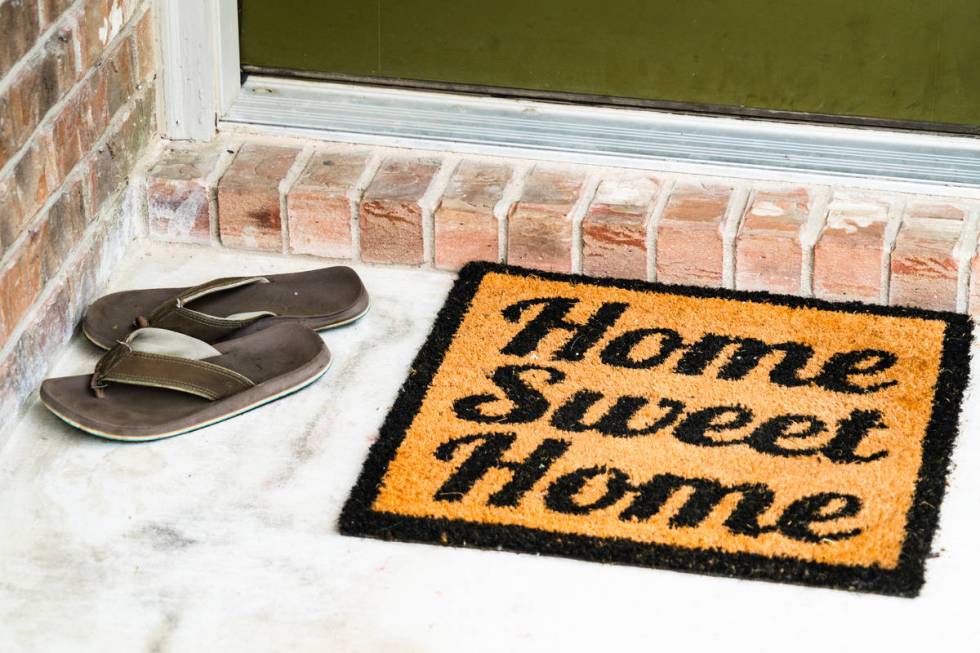No need to replace door, just threshold

Q: The threshold on my front door is ruined, and I need to replace it. I have a single door that is about 15 years old. I don’t want to replace the entire door, just the threshold. I would appreciate any suggestions.
A: Over time, a threshold can become damaged and need replacement. If you have a gap between the bottom of the door and the threshold, you may be able to avoid replacing the threshold and install a new sweep on the bottom of the door instead.
The procedure is easy: Simply slide the sweep along the bottom of the door and secure it. If this doesn’t do the trick, then replacing the threshold is the next step.
The threshold is originally installed as a pre-hung door unit along with the jambs and it slides into the framed opening for the door. The threshold is usually nailed or stapled to the side jambs. Usually, adhesive or caulking is laid down under the threshold to keep out the weather and bugs.
To remove the threshold, you will probably need to cut it in the middle and shimmy it out. You can do this with a back saw or a reciprocating saw, and you may need to break the bead of caulking or adhesive to free it up.
Removing it from the side jambs is next, and you may be able to lift up the threshold from the point where you cut it and pivot the end up to pull it away from the side jambs. You also can try moving it in a back-and-forth motion. It’s a little like yanking out a tooth, minus the blood. Once the old threshold is out, pull out any remaining nails from the side jambs.
You must buy a threshold of the same style that will fit the opening. I had a customer that had a double door and she bought two smaller thresholds with the idea that she would just butt them together to span the opening — bad move. If you need to special order a size, then do it.
Once you have the correct one, swing the door out of the way or remove it so you can install the new threshold, which will screw into the floor. If you are installing over a wood subfloor, you can screw it into the wood. If you are installing into concrete, lay the threshold into place and mark the spots on the concrete and then you can drill the holes with a masonry bit.
Lay down a couple of thick beads of adhesive caulking so that when you install the threshold there won’t be any gaps for insects or breezes. Use Tapcon anchors (about $10 per package) and screw the threshold into place.
Swing the door (or rehang it if you had to remove it) back into place and check the fit. The door should close easily, and the sweep on the bottom of the door should just make contact with the top of the threshold. A slight rubbing of the sweep against the top of the threshold is expected. There shouldn’t be any gaps under the door whatsoever.
From inside the house with the door closed, look under the door for daylight. If you see daylight (assuming you are doing this during the daytime), then you need to make some adjustments.
The threshold will have some adjusting screws that are countersunk into the top of it. You can turn the screws clockwise to decrease the rubbing and increase the space between the door and threshold.
By turning the screws counterclockwise, you will close this gap. If you have adjusted the screws as far down as they can go and you still have difficulty closing the door, as a last resort you may have to remove the door and plane off a small amount from the bottom of it.
When you’re done, lay a bead of clear silicone along the sides of the threshold where it meets the side jambs of the door. Then you will be ready to start swinging and slamming.
Mike Klimek is a licensed contractor and owner of Las Vegas Handyman. Questions may be sent by email to handymanoflasvegas@msn.com. Or, mail to 4710 W. Dewey Drive, No. 100, Las Vegas, NV 89118. His web address is www.handymanoflasvegas.com.